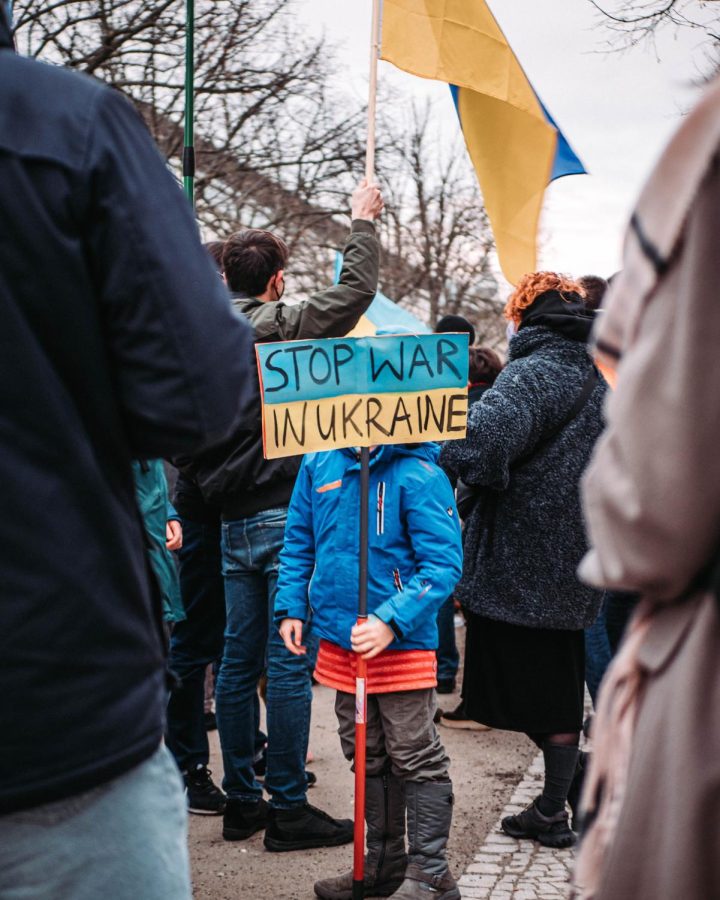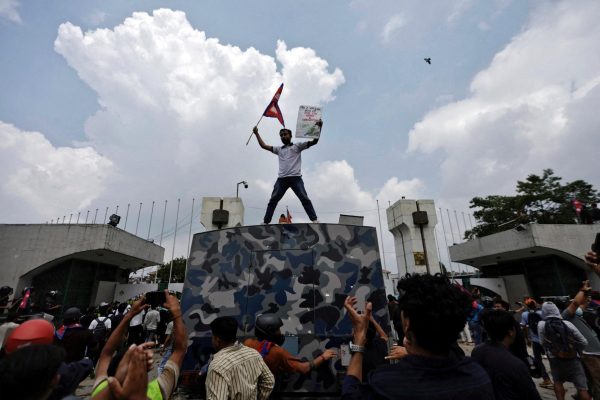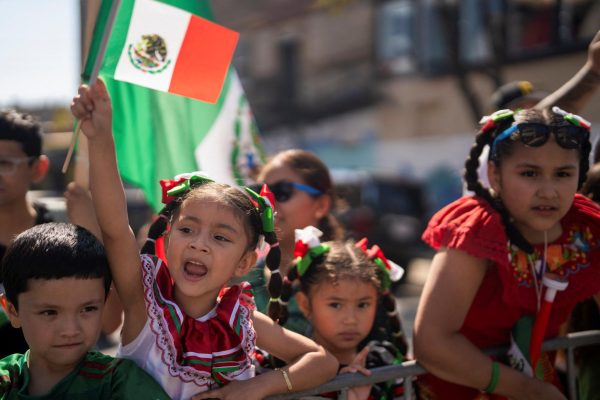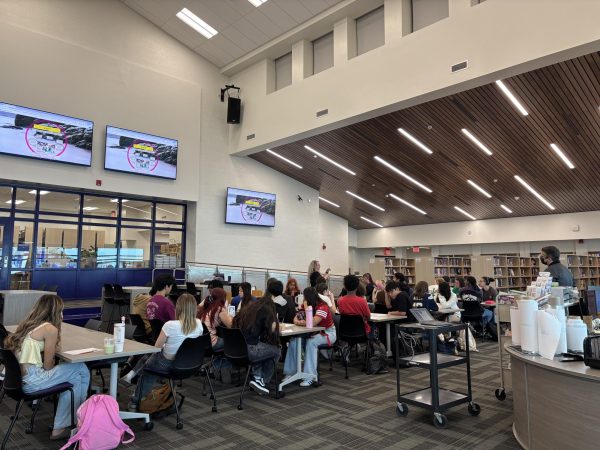Two weeks since the beginning of the Russo-Ukrainian War: A recap
Photo by: Matti Karstedt @ Pexels
A kid in Berlin, Germany holds up a sign in protest of the war in Ukraine.
The Russian invasion of Ukraine began about two weeks ago, on Wednesday, Feb. 23, at 7:07 p.m. PST (Thursday, Feb. 24, 5:07 a.m. GMT+2). It began with a several-hour-long missile bombardment of vital Ukrainian military infrastructure and was followed by Russian troops crossing the border.
Here’s a summary of some of the most impactful events in the past two weeks:
Oil prices reach record highs
On Sunday, Feb. 27, the American oil benchmark company, West Texas Intermediate crude futures, reported that the price for a single barrel of oil broke the $100 mark. The international benchmark, Intercontinental Exchange Brent crude, also reported a massive spike in prices that same day. As of March 8, WTI lists oil at $123.87 and ICE Brent lists oil at $128.10 per barrel.
Gas companies and stations are now immediately adjusting the price of gasoline per gallon in response to the price increases. The price is nearing $5 per gallon nationwide and is expected to continue climbing.
Kherson captured by Russian troops, first major population captured
Russian troops captured the port city of Kherson on Wednesday, March 2 after several days of fighting. This was the first major population center to be captured since the beginning of the invasion. Igor Kolykhaev, mayor of Kherson, surrendered the city to Russian forces after they entered the city center and an envoy of 10 officers entered the administration building, declaring their intentions to set up a military administration to replace the civilian government.
International Criminal Court begins investigation of alleged war crimes following the Russian invasion
Following a request from Ukraine, the International Criminal Court launched their investigation of allegations of war crimes on Thursday, March 3. A party of investigators, lawyers, and people familiar with military operations planning were dispatched to Ukraine. They will investigate potential war crimes committed by both sides during this conflict and back to the 2014 annexation of Crimea.
The United Nations voted 141 to 5 to condemn Russia’s invasion
The United Nations General Assembly voted upon and approved a resolution that condemned the Russian invasion of Ukraine and made calls for them to halt. The vote occurred on Wednesday, March 2. There was widespread international support of the resolution. Out of the 181 nations represented at the UNGA, 141 voted for the resolution, 5 voted against, and 35 abstained. Russia, Belarus, Syria, North Korea, and Eritrea were the 5 who voted against it.
Fighting breaks out outside of Kyiv, 40-mile-long Russian convoy forms
Fighting in Kyiv’s suburbs broke out on the second day of the invasion. Many feared that the first night of fighting would be enough to break Kyiv’s defenses, and yet almost two weeks later, Russian forces are no closer than 15 miles from the city center, only 5 miles closer than when fighting first broke out. Heavy fighting continued throughout the past week and a half, with Ukrainian forces able to withstand continuous assaults. As Russian forces are continuously stalled, satellite imagery provided by Maxar Technology shows the build up of a 40 mile long Russian convoy, poised to attack Kyiv.
Over 1.7 million Ukrainian refugees documented
Within two weeks, officials in Ukraine-friendly nations have collectively recorded over 1.7 million refugees fleeing the Russian invasion. Over three percent of Ukraine’s population of 44 million have been displaced from their homes. Thousands more are expected within the coming weeks as the Russian advance shows no sign of stopping.
Civilian death toll climbs, reaches the hundreds
The civilian death toll has reached the hundreds. The United Nations has confirmed 364 deaths and 759 injured with hundreds likely still unaccounted for. While several “official” numbers for the military death toll have been released by both the Russian and Ukrainian defense ministries, those numbers haven’t been verified by independent sources.
Ukrainian civilian militia forms
As Russian forces continue to advance and pummel Ukrainian cities, Ukrainian President Volodymyr Zelensky called for the general mobilization of all men aged 18-60, barring them from leaving the country. Thousands of rifles were distributed in Kyiv alone to thousands of civilians who have joined the ranks of the Ukrainian Territorial Defense Force. Mass civilian production of Molotov cocktails have sprung up in nearly every major city and are being distributed to the defenders.
Anti-war protests continue to grow across Russia, 13,000 arrested as Moscow tightens restrictions on protests
Anti-war protests have been staged in over 60 cities in Russia alone. Since the beginning of protests on Feb. 24, over 13,000 protesters have been arrested. Protests and large group organizations are heavily restricted by Russian law, requiring special permits that are typically difficult to acquire. Recently, the Russian Federal Assembly (their version of Congress) has been moving to criminalize anti-war protests and dissent against the government.
Negotiations between Russia, Ukraine, and Belarus
As of Monday, March 7, there have been three rounds of negotiations between Russia, Ukraine, and Belarus, each with the goal of providing humanitarian aid to besieged cities and potentially brokering a ceasefire. The delegations each time have returned home citing unfulfilled expectations and outrageous demands by each side.

Matthew Rea is a senior at RCHS, and this is his first year in journalism. He is an assistant editor for the school newspaper, The Cat’s Eye. His favorite...






